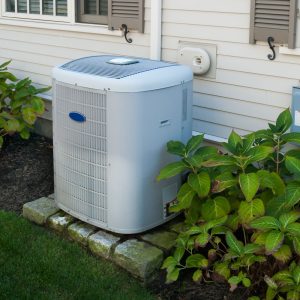Most homeowners now have an air conditioner. Some have installed the window AC, while others have selected the central AC system. All such devices are designed to keep the rooms cool and comfortable. You avoid the problems caused by the hot environment. Have you wondered how much it costs to run an AC? Compared to a household fan, an AC consumes a lot more electricity.

There are many costs associated with running an air conditioner. The factors that affect these costs include the local climate, type of AC, and the amount of cooling required. If you live in an area that sees mild summer and extremely cold winter, your AC does not have to work that hard. However, if you live at a location that experiences warm winter and scorching summer, your AC will be working hard and even extra to maintain the desired cool temperature level.
Weather conditions can vary from one year to another, showing in your annual energy bills. One year the summer months may be cooler, while the next year, the temperature may rise very high during these months, forcing you to pay a higher electricity bill.
One Barstow air conditioning company claims that the amount of electricity your air conditioner uses also depends on its efficiency rating. Most appliances available in the market are now rated for their energy consumption. When you buy an AC, you will see a label containing information about the appliance’s electricity specifications. It gives an idea of how much electricity the appliance will consume under standard conditions. Buy an air conditioner that requires minimum electricity. This way, you will save money every year. If your existing AC system is a decade or older, it is well worth investing in a new one because the newer AC models have higher energy efficiency.
What is the cooling load of the house? Air conditioners are available in different sizes for different applications and cooling demands. Each model is designed for cooling a specific amount of space. You can manage with 1-2 window ACs in an apartment, but a three-bedroom house will require larger or more AC units. While a large air conditioner costs more, you will save money if you use it for an appropriate size large home.
The setting you choose on the AC’s thermostat affects the running cost. A high setting makes the air conditioner run less, but if you lower the setting, it will run more often. An electricity utility company suggests that the thermostat should be kept above 78 degrees. It can help you save 10-20% on energy expenses of running your AC.
The electricity tariff applied by your local electric utility company affects how much you have to pay to run your air conditioner. This cost cannot be controlled, but you can save money in other ways like using an energy-efficient AC.
The following guide will help you determine how much it will cost you if you run an air conditioner compared to an oscillating or ceiling fan at a middle-speed setting.
You will be paying $98 if you run a 3-ton central AC for eight hours every day, 15 days a month, and an average rating of 0.17 kilowatt per hour. This cost is only for the air conditioner and does not include other electrical items like the refrigerator, lights, stove, washer, and dryer.
On the other hand, you will pay only $1.50 if you run an oscillating or ceiling fan at medium speed, eight hours a day, all 30 days of the month, at an average rating of 0.17 kWh. At this rate, you will be able to run 68 fans for a month before you cross the cost of running a central AC.
There are several ways you can reduce your common electricity bill. It is important to keep your air conditioner filters clean. Clean or replace them when needed. Raise the temperature on the thermostat when going out of your home. Take into account if you have pets at home. Keep your water heater temperature around 120 degrees. Use your dishwasher or clothes washer at full loads. Run your dryer on the energy-saving cycle mode.
There are other measures you can take for this purpose. Use fluorescent or LED lamps in place of incandescent bulbs. You can save as much as 75% on your lighting cost. Seal all your windows, doors, and pipes to avoid air leaks. Use weather strips around doors, windows, and pipes. The air conditioner ducts should be checked for any air leak. Such leaks reduce the efficiency of an AC by up to 20%.